ARE YOU LOOKING FOR THE MOST BEAUTIFUL CASTLES IN POLAND? Then you’re in the right place!
The UK, France and Germany in particular, have become synonymous with impressive castles. I mean, we’ve all seen the dreamy shots of Schloss Neuschwanstein in winter on Instagram and the majestic Highclere Castle on Downton Abbey. Right?
But did you know that Poland boasts hundreds of castles and thousands of palaces!? I sure didn’t! In Poland, you’ll find everything from pink fairytale castles to impressive royal palaces and medieval ruins.
Of all the places I’ve visited in my 14 years of travel, Poland is one of the countries that have surprised me the most. As I’ve already mentioned in my reasons to visit Poland post, I spent five years living on and off in Krakow.
So I got to explore the country quite thoroughly which I’m very happy about because I truly believe Poland is one of the most underrated countries in Europe.
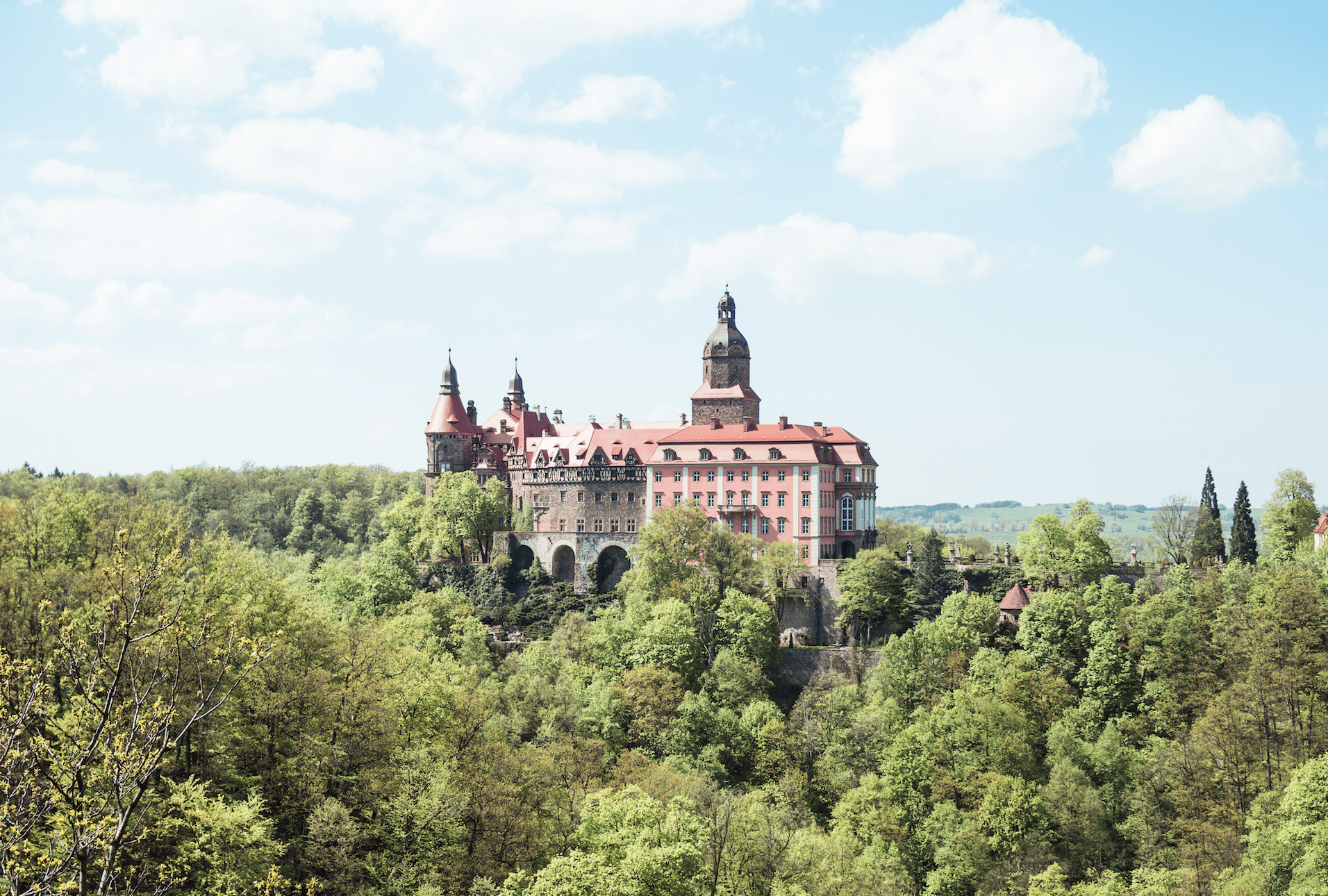
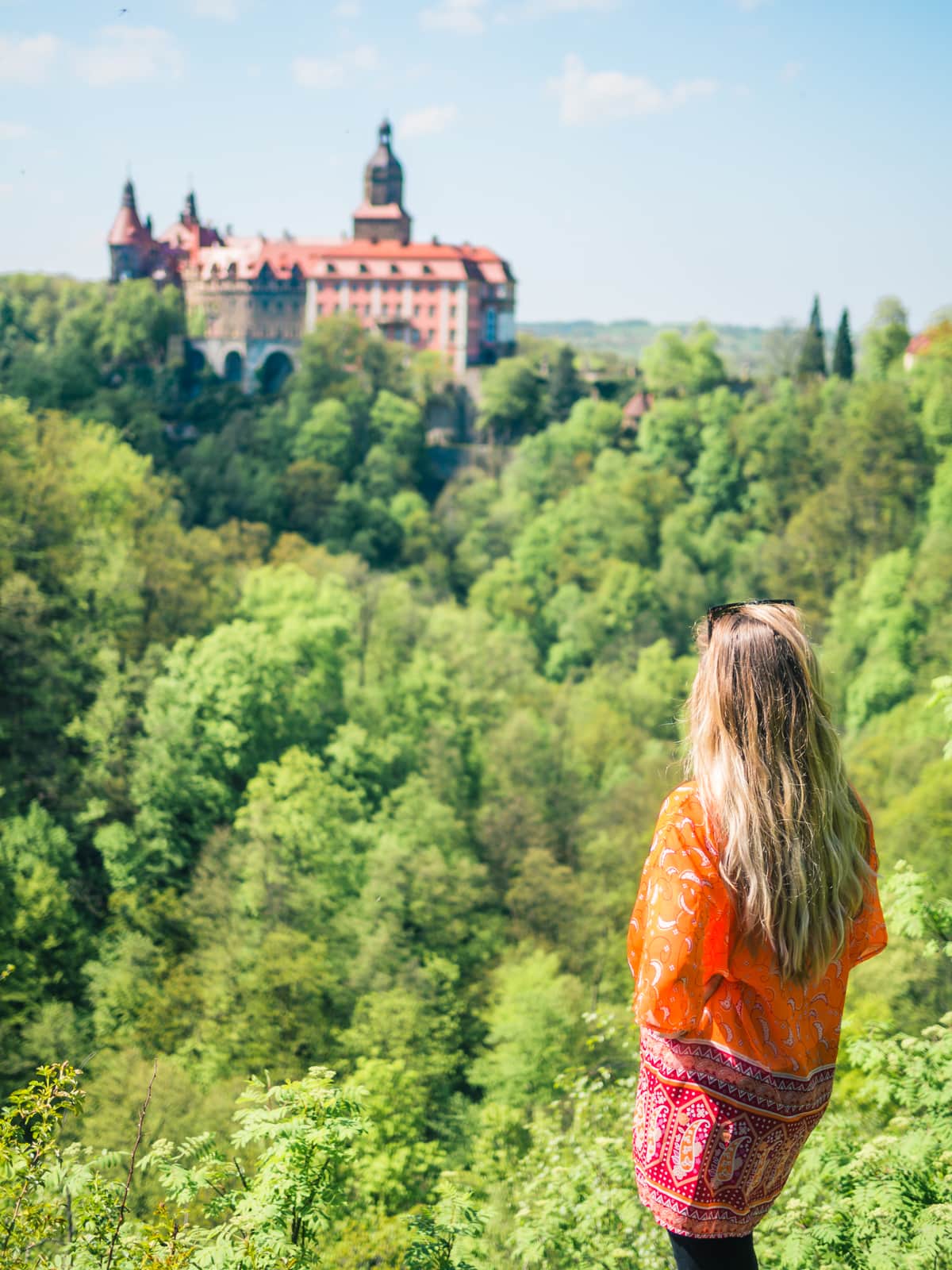
🌟 Remember to always get insurance before you travel to Poland or anywhere else. SafetyWing is an affordable subscription travel insurance that you can purchase even after departure. Read my complete SafetyWing review here.
Article overview
- Map of castles in Poland
- Most beautiful castles in Poland
- 1. Moszna Castle
- 2. Książ Castle
- 3. Pieskowa Skała Castle
- 4. Ogrodzieniec Castle
- 5. Bobolice Castle
- 6. Warsaw Royal Castle
- 7. Niedzica Castle
- 8. Malbork Castle
- 9. Gołuchów Castle
- 10. Lublin Castle
- 11. Nowy Wisnicz Castle
- 12. Wilanow Palace
- 13. Czocha Castle
- 14. Wawel Royal Castle
- 15. Krzyztopor Castle
- 16. Rogalin Palace
- 17. Kórnik Castle
- 18. Kwidzyn Castle
- 19. Łańcut Castle
- 20. Lidzbark Castle
- 21. Baranów Sandomierski Castle
- 22. Będzin Castle
- How to get around Poland
- FAQs: Castles in Poland
- Looking for more Poland guides?
Map of castles in Poland
Can you believe there are this many stunning castles in Poland? And this is just a fraction of
Most beautiful castles in Poland
Here’s a list of my personal favorite 22 palaces, ruins and castles in Poland.
1. Moszna Castle
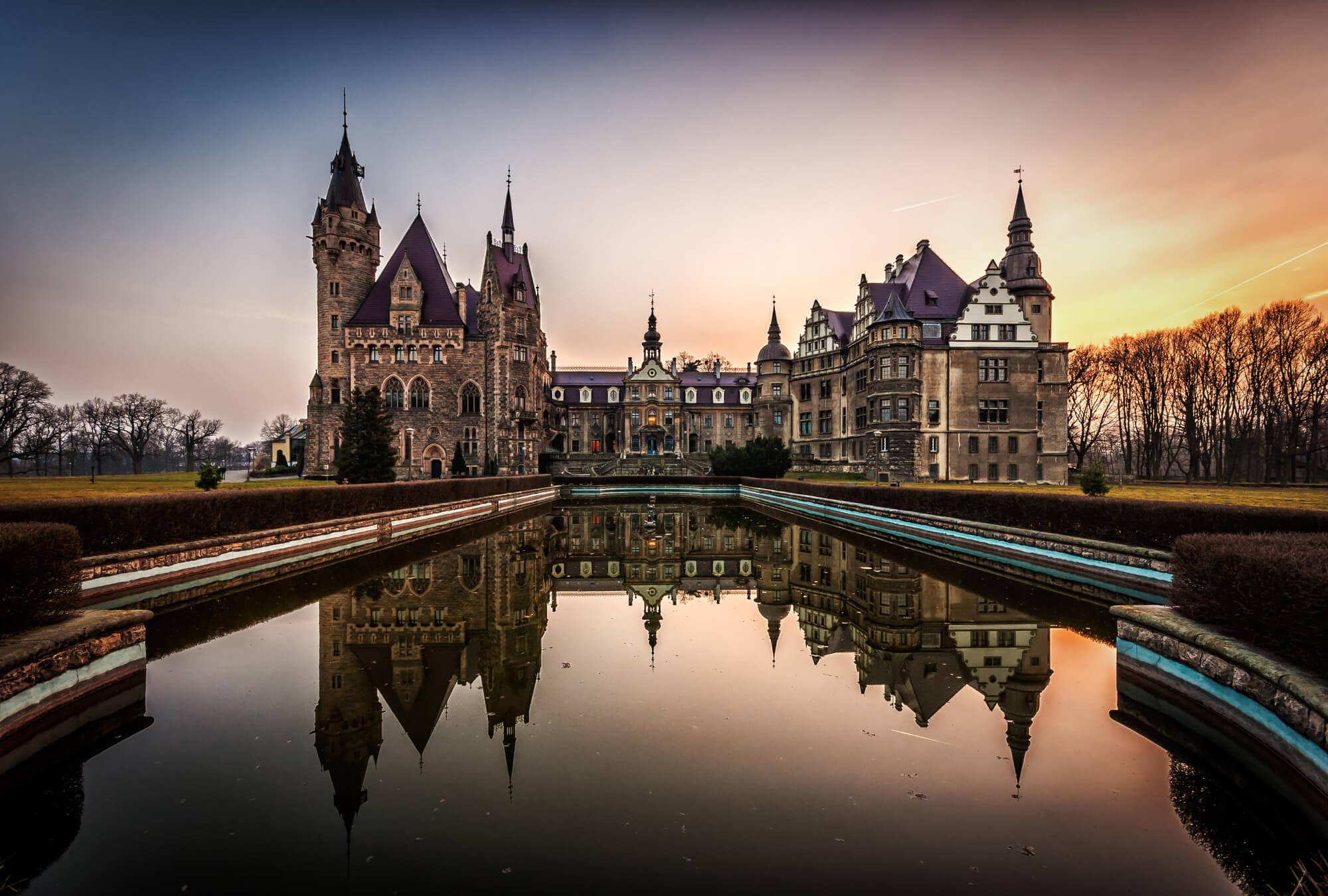
Moszna Castle, located in southern Poland between Katowice and Wrocław, looks like something out of a fairytale. Its sheer size and elegance are genuinely captivating, so it comes as no surprise that it is considered the most magnificent castles in Poland.
Locals believe that initially, the structure was not, in fact, a castle but a monastery run by the Order of The Knights Templar. While there are countless stories and secrets around the history of Moszna Castle, it wasn’t until investigations were carried out that a bunch of ancient cellars was found below what is now the gardens. Which only reinforces the possibility of a Templar connection.
From the available records, we can see that the first family registered as owners of the grounds was the Skall family back in 1679. The history of the castle following the first known owners is long and detailed.
Of course, originally it was nowhere near as grand as what we see today but over the years, and the exchange in ownership the castle grew into the towering beauty that we see today.
Moszna Castle Hotel
Inside the castle turned hotel there are a staggering 365 rooms while the most striking feature outside has to be the 99 towers and spires. Moszna Castle covers an area of around 7,000 sq. meters and is bursting with character due to the many legends and mysteries that surround it.
Obviously, you don’t have to be a guest to visit the castle, but as glamorous as it looks, a hotel room here is actually very reasonably priced.
🏰 Want to stay in the stunning Moszna Castle? >> Check availability here
2. Książ Castle
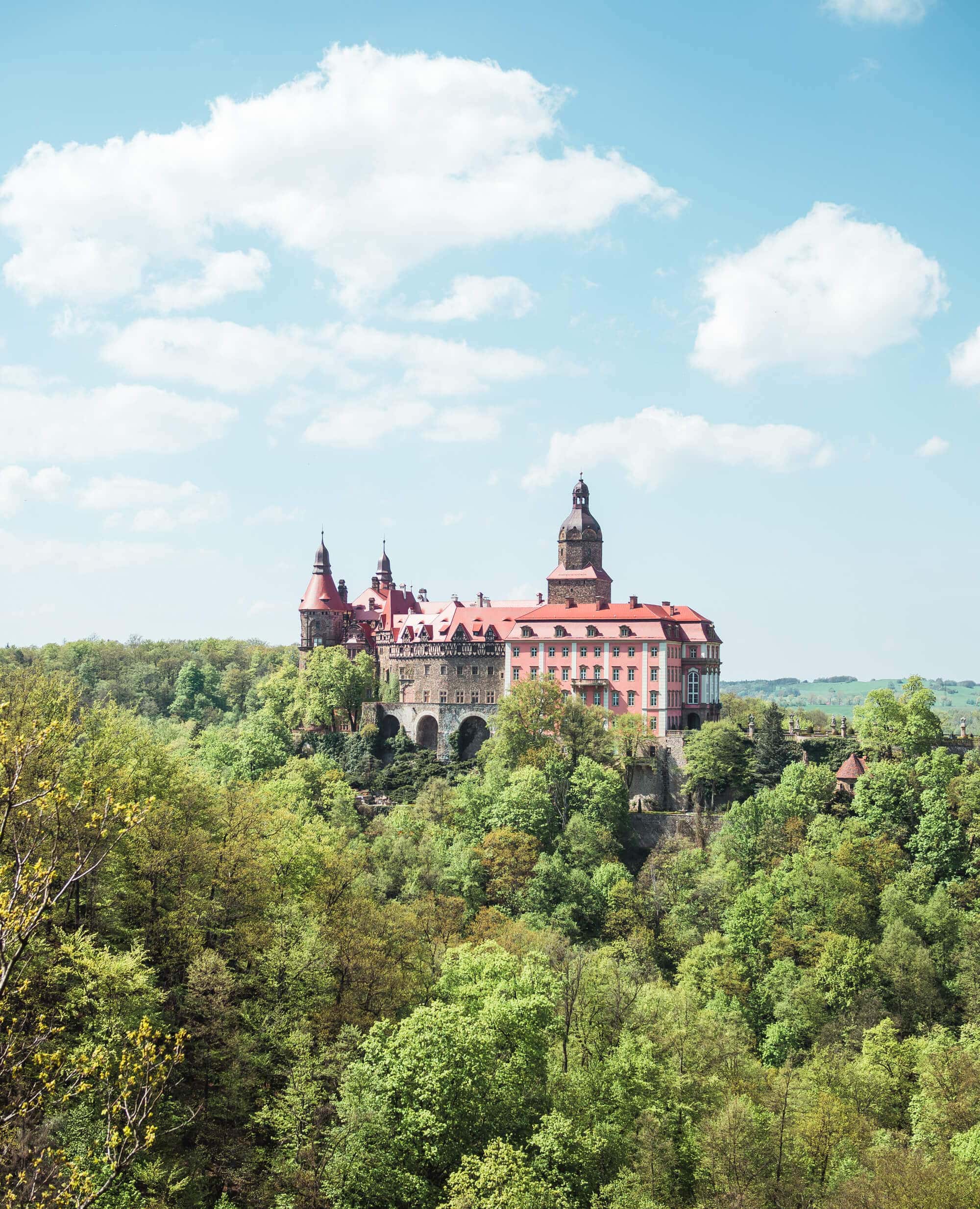
Książ Castle, also known as the Pearl of Lower Silesia, lies within Książ Landscape Park, a protected area in western Poland close to the Czech border. It is my favorite castle in Poland and I bet you can see why!
For more than 400 years it belonged to one family – the Hochbergs, and was unfortunately destroyed during a fire and numerous wars. In 1941 the castle was seized by the Nazis who were planning on turning it into a residence for Hitler. Soon after the construction of a bunker 50 meters beneath the castle began, but the complex was never finished.
A couple of years ago the area drew worldwide attention when two explorers announced they had located a secret tunnel that supposedly was hiding a train loaded whit Nazi gold and treasures. Although no gold has been found yet, the stunning area which looks like something out of a fairytale is well worth a visit.
Today there are several hotels and restaurants on the property, with Hotel Książ being the largest and the closest to the castle. It’s the perfect location for a weekend getaway or a stop on your Polish road trip.
Książ Castle Viewpoint
The photo of me in front of Książ is shot from a viewpoint just up the road from the castle itself. You’ll find it by searching for Punkt Widokowy na Zamek Książ on Google Maps.
Książ Castle Tour from Wroclaw
Visit 4 highlights of the Lower Silesia Province – Książ Castle, the Church of Peace in Swidnica, Świdnica’s Market Square, and the Palm House – on a day trip from Wroclaw including hotel transfers.
3. Pieskowa Skała Castle

Pieskowa Skała Castle is a part of the Trail of the Eagle’s Nests, a chain of 25 medieval castles and ruins perched on hills and clifftops. It is the perfect half-day trip during a weekend in Krakow.
Since its humble beginnings as a defensive stronghold in the 14th century, the castle has been expanded and modernized with the changing trends by several different owners over the years.
Today it stands as one of the most pristine examples of Renaissance residential architecture in the country. It is also by far the best-preserved castle on The Trail of the Eagle’s Nests.
Pieskowa Skała boasts a large courtyard, a clocktower, restaurant and a perfectly manicured garden. It also houses a collection of art and artifacts from the Royal Castle Museum in Kraków. The best view of Pieskowa Skała is from the valley below the castle, where you’ll also find a very interesting-looking rock called “Hercules’ Club”.
🌟 Trail of the Eagle’s Nests tour
If you go on one tour in southern Poland, this is the one I recommend!
Discover the dramatic landscapes of Ojców National Park and the 14th-century castles of the Trail of the Eagle’s Nests. Stop by Korzkiew Castle, Pieskowa Skala, Rabsztyn Castle, Bobolice Castle and Błędowska Desert, the largest shifting sand dunes in Central Europe. Hotel pickup and drop-off are included.
🎫 Check price and availability >> Castle Tour on The Eagle’s Nests Trail
4. Ogrodzieniec Castle
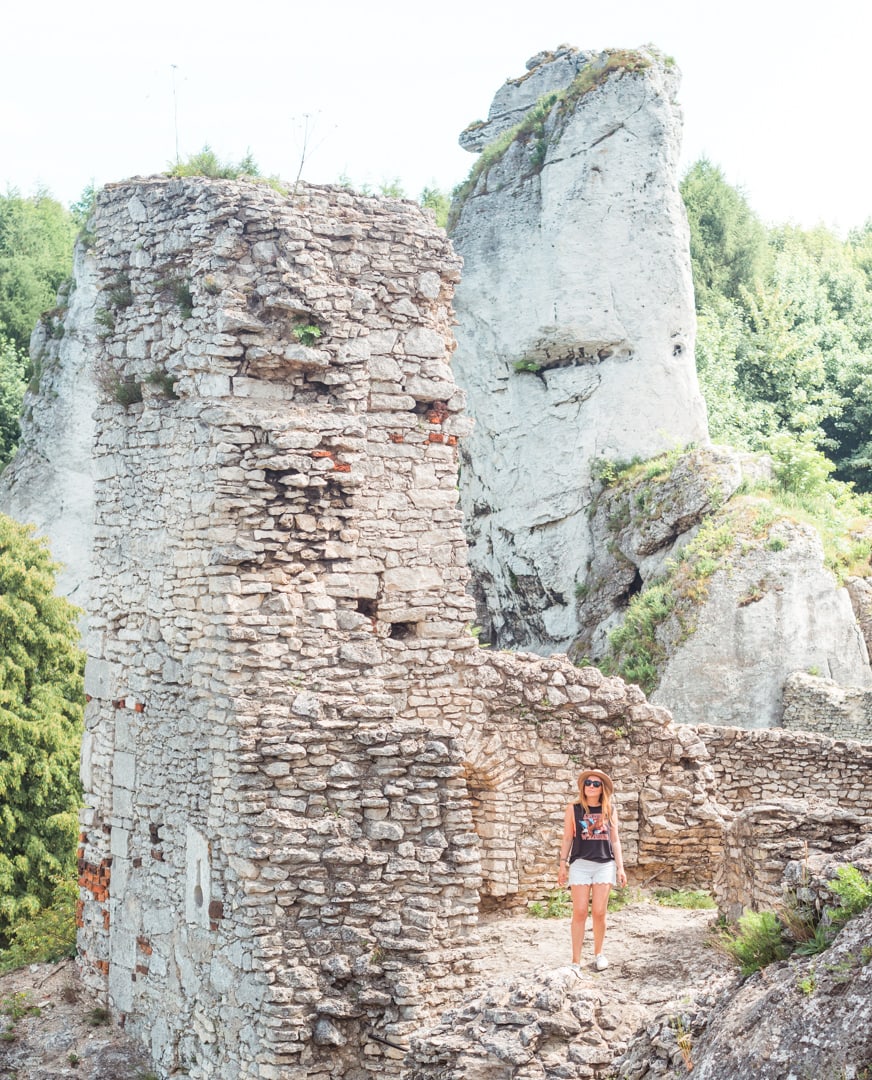
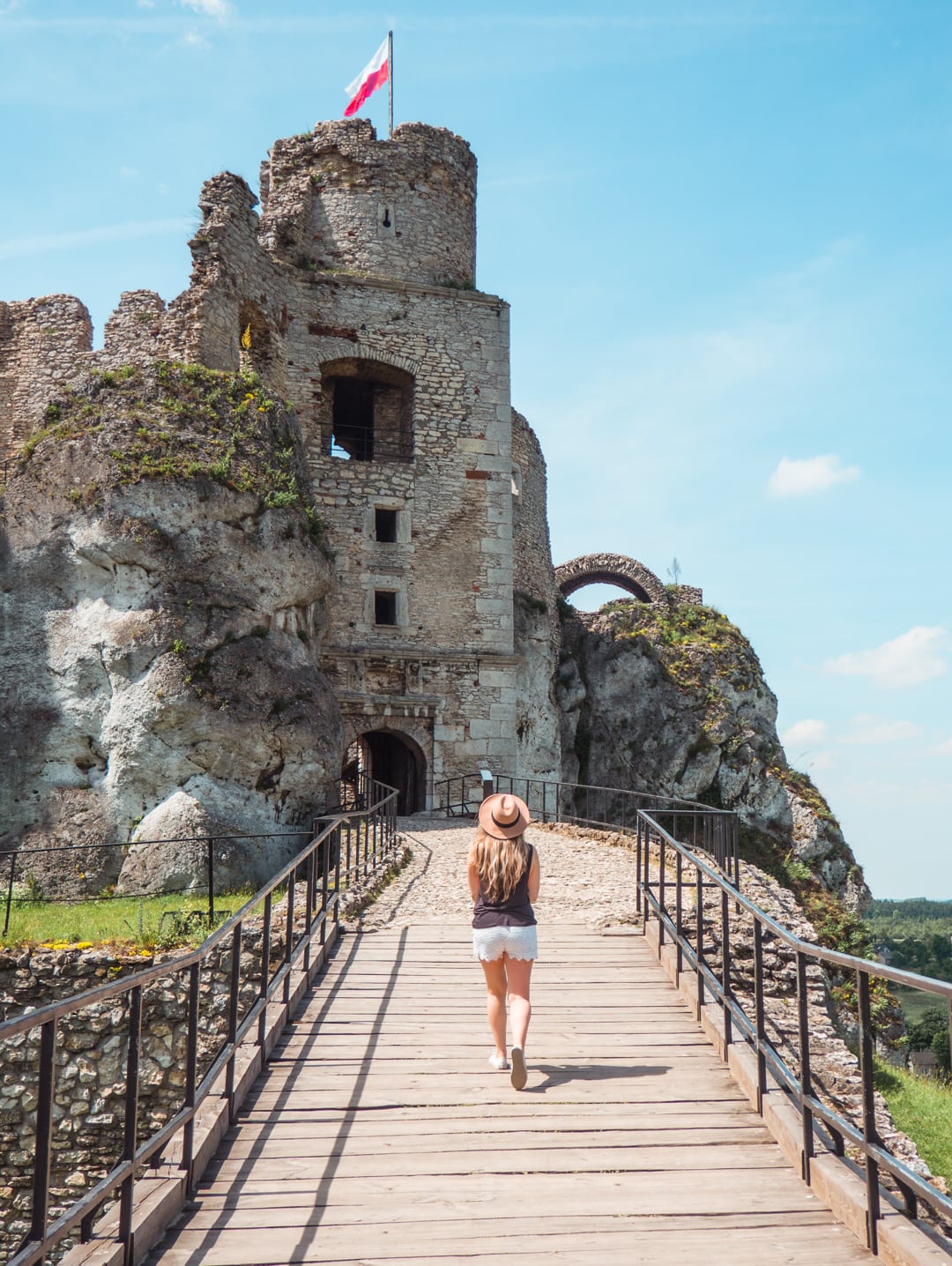
Ogrodzieniec Castle, another stop on the trail of the Eagle’s Nest, is a stunning medieval fortress located in the Kraków-Częstochowa Upland region of southern Poland. The castle was built in the 14th century and served as a defensive stronghold for the powerful Włodkowie Sulimczycy family.
Over the centuries, the castle was expanded and renovated, with new towers and fortifications added to enhance its defensive capabilities.
You can explore the castle’s ruins, which include the remains of the main tower, the chapel, and the gatehouse. The castle’s strategic location on a hilltop provides stunning views of the surrounding countryside, making it a popular spot for photography and picnics.
The castle also hosts various cultural events throughout the year, such as medieval reenactments, concerts, and festivals, which attract visitors from all over the world.
🌟 As mentioned above, Ogrodzieniec Castle is included in this tour on the Trail of the Eagle’s Nests.
5. Bobolice Castle

Bobolice Castle is a magnificent 14th-century fortress in the Silesian Voivodeship region, about two hours from Krakow. The powerful Włodkowie Sulimczycy family built the castle as a defensive stronghold against invaders and it is today the most Disneyesque castle on the Trail of the Eagle’s Nests.
Over the centuries, the castle was expanded and renovated, with new towers and fortifications added. Unfortunately, the castle was destroyed during the Swedish invasion of Poland in the 17th century and was left in ruins for many years.
In the 20th century, Bobolice Castle was restored and opened to the public as a museum and hotel. You can explore the castle’s ruins, including the main tower’s remains, the chapel, and the gatehouse.
🏰 Check price and availability here >> Castles Tour on The Eagle’s Nests Trail
6. Warsaw Royal Castle
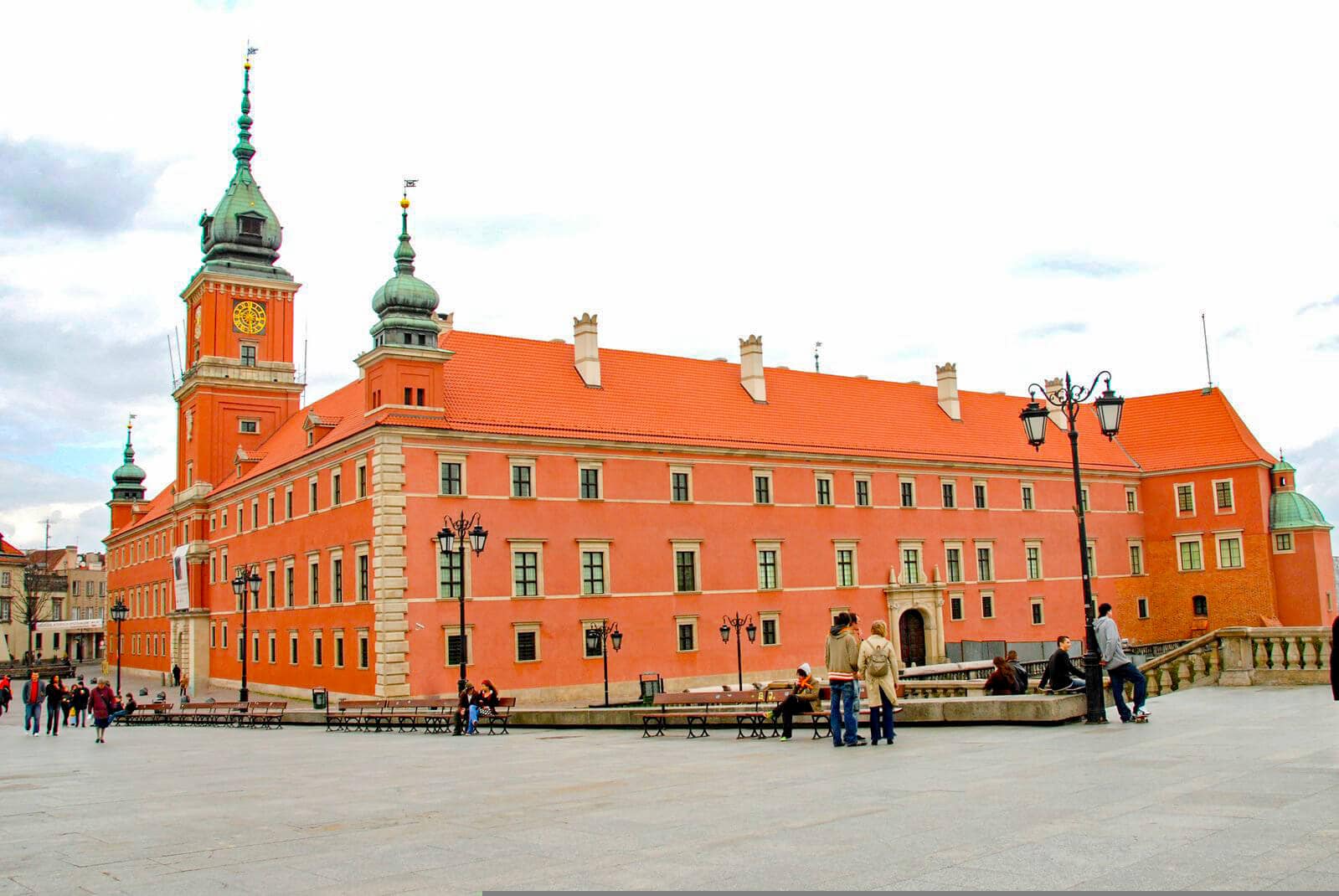
The Royal Castle, nestled in the city center, is one of Warsaw’s most famous and iconic attractions, enticing the city’s visitors with its grand, striking brick-red facade. Sadly, the original palace was destroyed by the Germans during WWII, but its replacement was eventually reconstructed in the late 20th Century.
The castle is open to visitors every day, except Mondays. However, if you are in the city on a Wednesday, take full advantage of the one day of free entry! Whilst there, you can arrange for a personal guided tour at an additional fee, or pick up an audio guide for your visit, costing between 12-17 zł per person.
During your visit, take in the beautiful period furniture and art masterpieces that decorate the palace today. One highlight is the castle’s Great Apartment, with its magnificent Great Assembly Hall. Here you can wonder at the beautifully restored decor, including its golden columns and intricately detailed designs.
The huge fresco you will find on the ceiling, titled “The Disentanglement of Chaos”, is a mighty sight with kings and angels soaring above you and is one of the centerpieces of the room. Throughout you will be wowed by the palace’s designs and is definitely not one to miss during your visit to Poland’s capital!
Limited on time?
Avoid the hassle of putting together your own itinerary and enjoy this comprehensive tour that includes door-to-door transport. See Warsaw’s Old Town, the Old Market Square, and highlights along the Royal Route such as the Royal Castle!
🎫 Check price and availability here >> Warsaw Old Town with Royal Castle Tour
7. Niedzica Castle
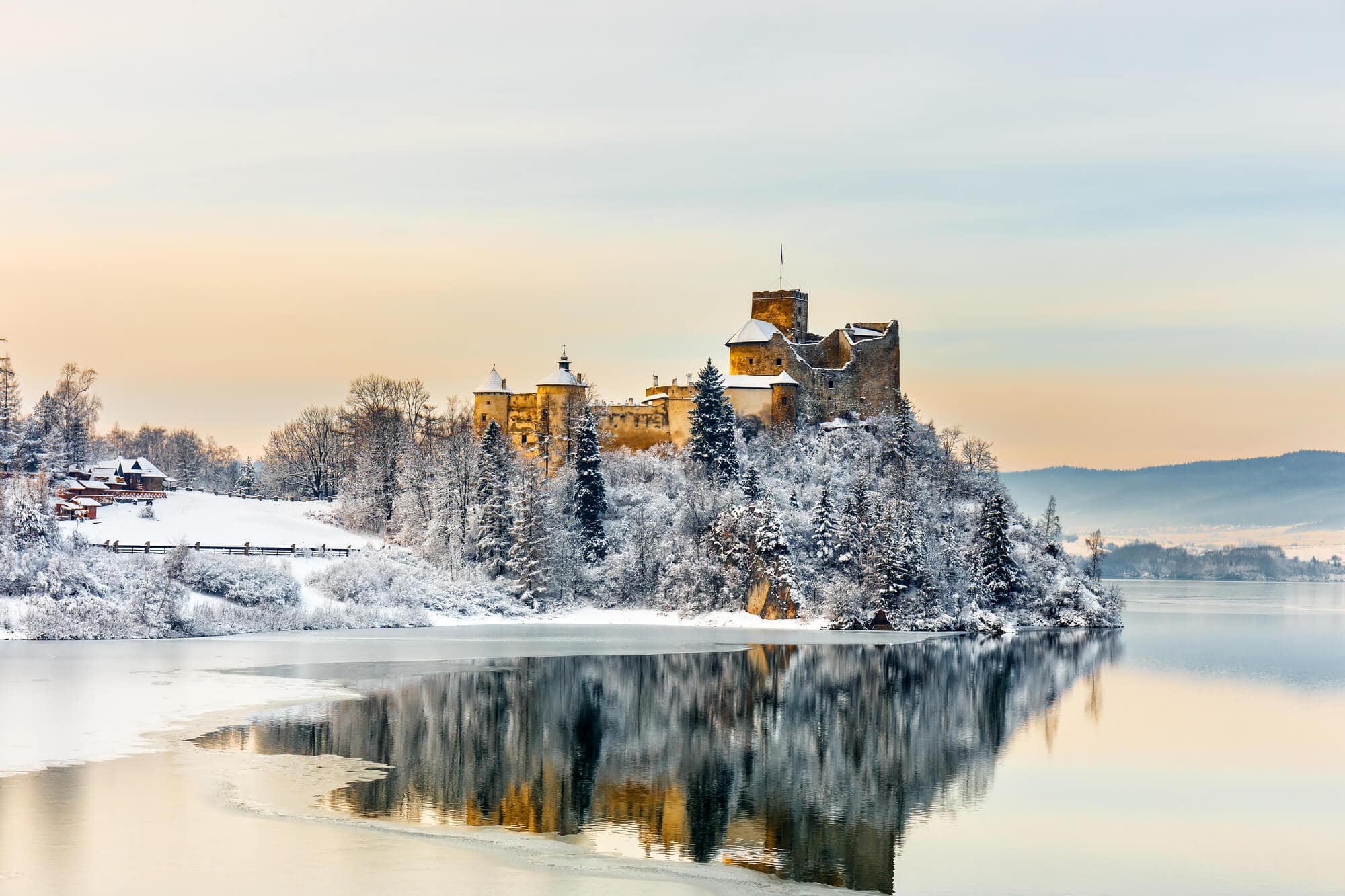
Situated on a hill overlooking the mouth of the Dunajec River, is Niedzica Castle. It was initially built by a Hungarian man by the name of Kokos of Brezovica sometime between 1320 and 1326. Due to its location Niedzica Castle is also referred to as Dunajec Castle, so for the sake of clarity, both names refer to the same castle.
In 1963 the castle opened up as a museum which is how it remains today. The upper and middle section of the castle remains as do the dungeons. Heading toward the museum you can see stored artifacts and bits of the original interior of the castle. Along with this are ancient rifles, prints, engravings, clocks in their original condition, pistols, old documents, and much more.
Another castle another legend and the one behind this one is heart-wrenching. It’s believed that an Inca princess was killed in the Niedzica Castle after which her ghost remained to roam the grounds trying to tell her son where the lost Inca treasure could be found.
In order to visit Niedzica Castle, unless you have a car, you would need to join a tour departing from Zakopane or Krakow like the one below. From October to April, the castle opens from 9:00 am until 5:00 pm and from May through to September it remains open until 7:00 pm.
🌟 My top pick
>> Rafting and castle tour departing from Kraków
My second favorite experience I’ve ever had in Poland is this day trip through the south. It includes a relaxing ride down the Dunajec River, a tour of Niedzica Castle and a cable car ride to the top of the Palenica Mountains for panoramic views across the valley below.
8. Malbork Castle
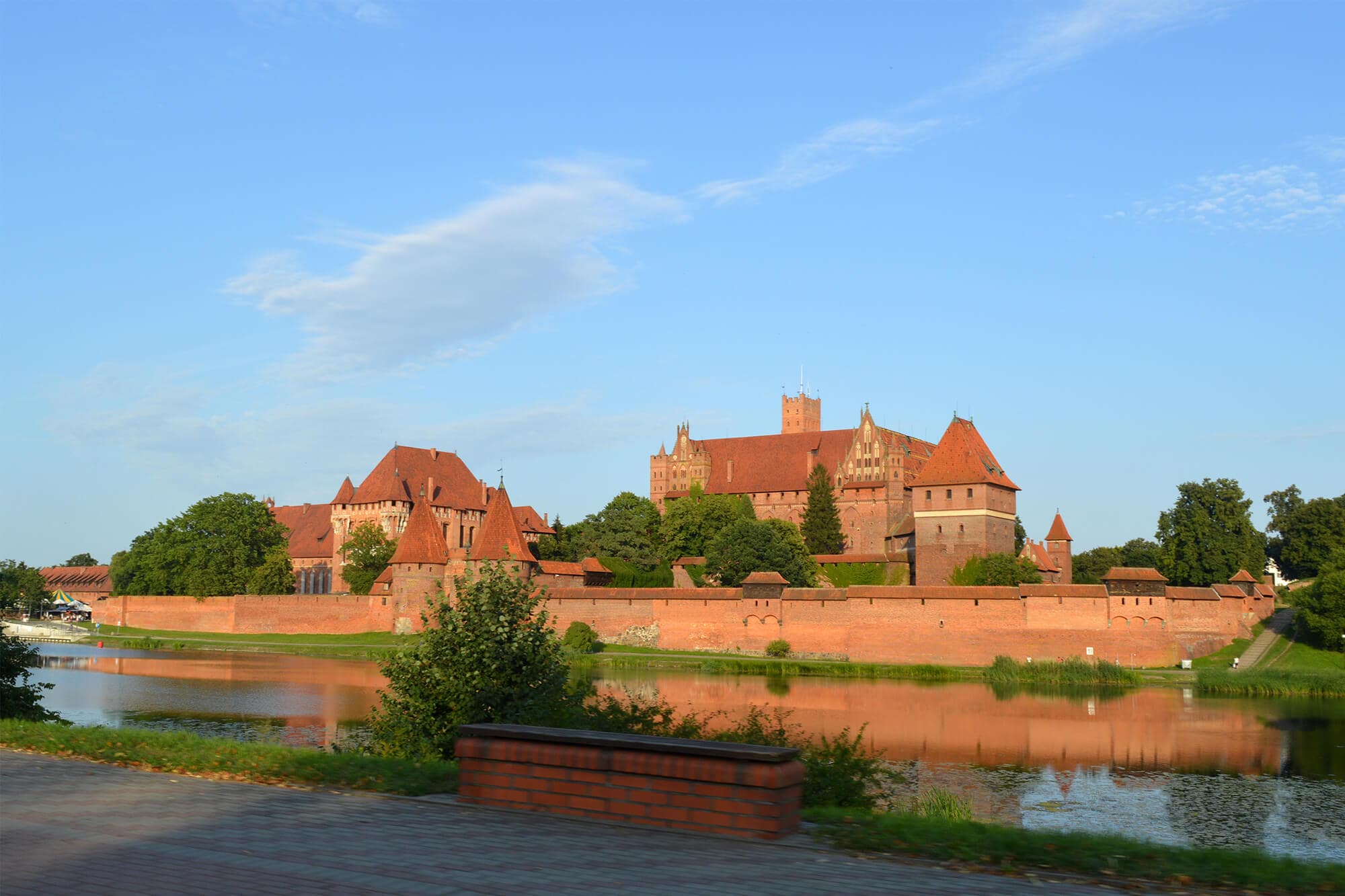
Malbork Castle, or in its official name the Castle of the Teutonic Order, is a perfect day trip from Gdansk. It is the largest castle in the world and also one of the World Heritage Sites of Poland. You can reach it by car in less than an hour, or take a short train ride from Gdansk to Malbork.
The Teutonic Knights built the castle during the 13th century, and it was functioning as a fortress. The ownership of the castle changed several times over the centuries. Among others, it served as one of the residencies of the Polish Royals, then for 2 centuries, it belonged to Germany. It was given back to Poland after World War 2. After extended renovation, nowadays it hosts several exhibitions.
The castle is huge and well worth exploring not only the interior but outside as well. The Blessed Virgin Mary Church and the statues of the knight are one of the most spectacular parts.
Popular Malbork castle tours
🌟 My top pick >> If you’re a history buff like me, I recommend this day trip to Malbork Castle and Westerplatte from Gdansk. You get skip-the-line tickets to Malbork, and you can explore the castle at your own pace with an audio guide.
If you prefer a human guide >> Explore the impressive Malbork Castle on this half-day trip from Gdansk with an English-speaking driver and an English guide. Hotel pick-up and drop-off are included in the price. You leave early in the morning to beat the crowds, and that means you still have the afternoon and evening to enjoy in Gdansk.
9. Gołuchów Castle
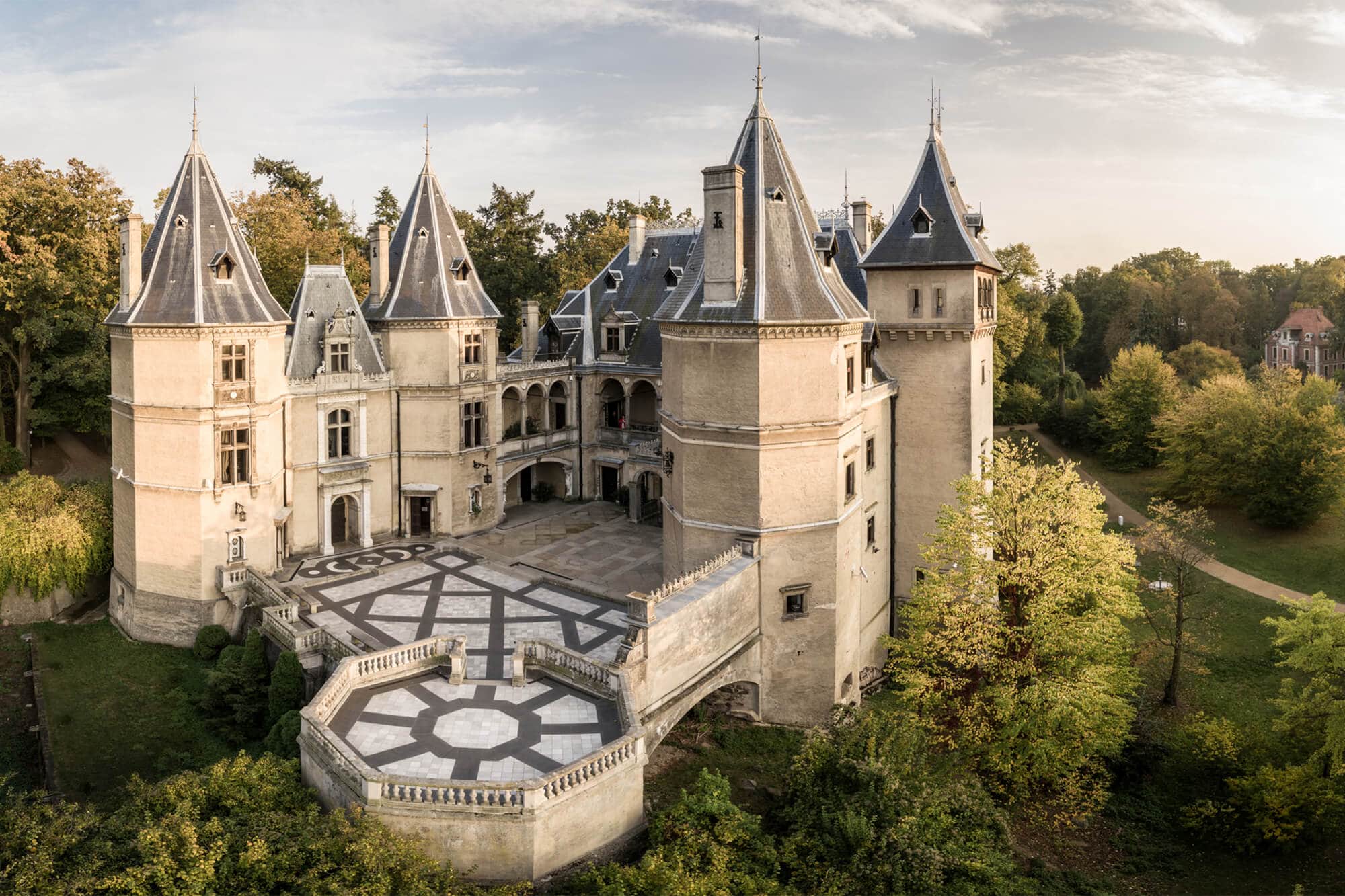
Goluchow Castle, a captivating structure that sits pretty near the Trzemna River, was built in the late 16th century by a family known as the Leszcynskis. Several centuries later the castle was transformed by Izabela of the Czartoryskis into the French Renaissance style.
Izabela had the famous French architect Maurice August Ouradou work on the plans with the assistance of Zygmunt Gorgolewski from Poland. The outcome of their work was inspired by that of the renowned Loire Chateaux mixed with some Italian style. Even some of the sculptures that remain there now were brought in from France and Italy.
Open to the public since 1962 the building contains a wealth of exhibits both original and new. Goluchow Castle has many rooms to be explored including the gothic room, the ancient room, and the Polish room just to name a few.
The grounds surrounding Goluchow Castle is a beautifully landscaped park where you can sit down and take in the gorgeous sights. Goluchow Castle is open every day except for Mondays and the hours of visitation are between 10:00 am and 4:00 pm with Sundays remaining open until 6:00 pm.
If you would like to spend the night, the grand Dom Pracy Twórczej Hotel, located only a short three-minute walk from the castle, is a great option.
10. Lublin Castle
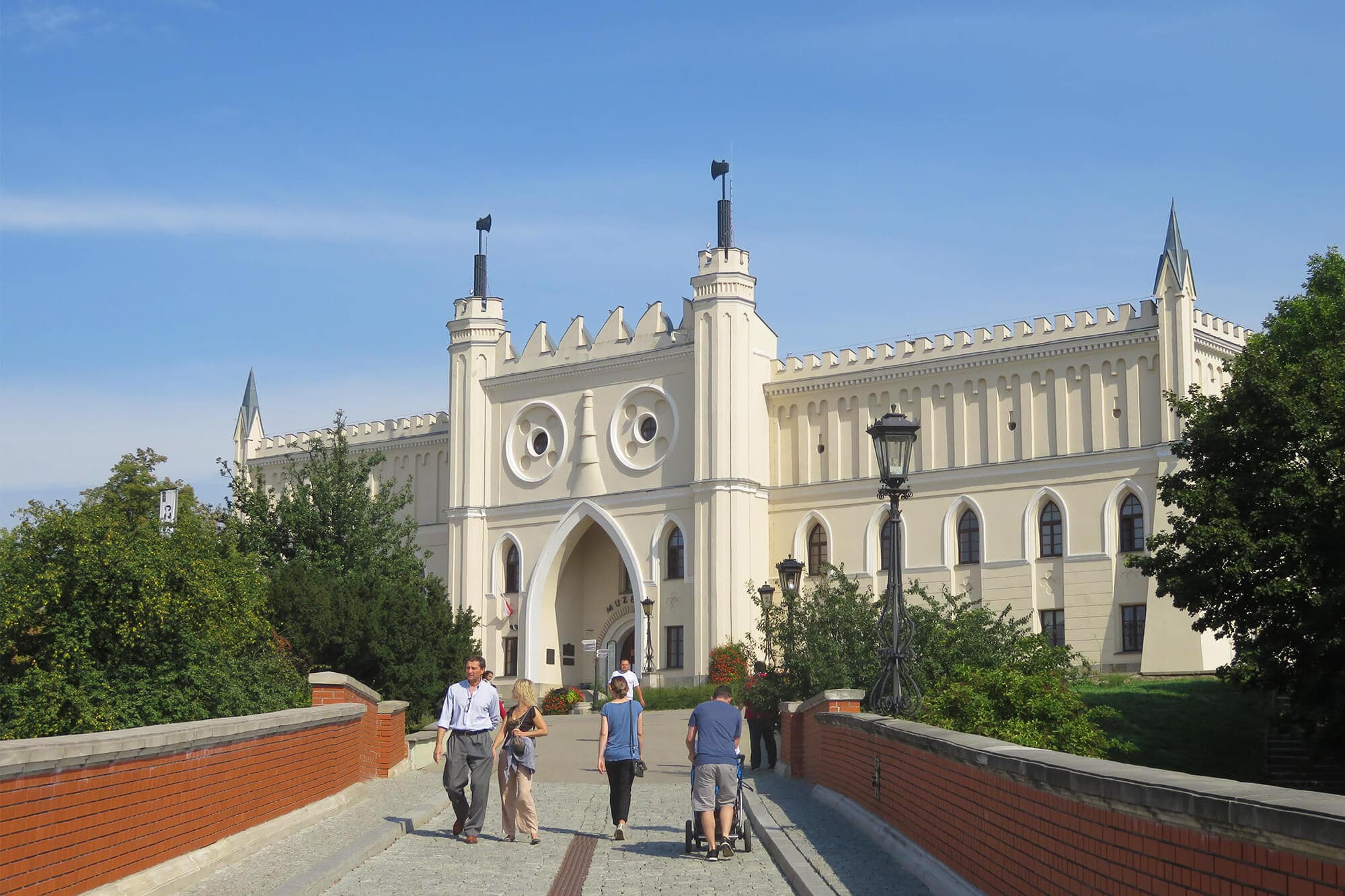
Few people visit Lublin in the eastern part of Poland, even though it is a beautiful city with several things to do. One of them is Lublin Castle which is one of the oldest and best-preserved castles in Poland.
Lublin is an ancient city situated between Vilnius and Krakow. It has always attracted rich merchants and traders from the area and this wealth is reflected in the Lublin castle. The castle was built in the 14th century by King Casimir the Great. In its glory days, the castle was serving royal families and was at the center of life in Lublin.
Wars in the seventeenth century put an end to the castle’s good times and gave it a dark purpose. Under Russian rule, the castle became a prison and later the Nazis used it as a detention center for political prisoners and Jews.
After the Second World War, Poland decided to preserve its heritage and the castle was renovated. In 1957 it opened its doors to the public as the Lublin Museum. The castle, which is open every day from 10:00 am to 6:00 pm, is well worth a visit even if you do not enter the museum. The castle is on a hill and the courtyard is free to enter. From there, you get a beautiful view of Lublin.
Lublin highlights guided tour
During the two-hour tour, explore highlights such as the Market Square, the former Town Hall, the Krakowska Gate and the neo-Gothic Lublin castle. Enter St. John the Baptist Cathedral and discover its rich interior and stunning organs before finishing the tour at the Church the Holy Spirit with its spectacular altar.
11. Nowy Wisnicz Castle
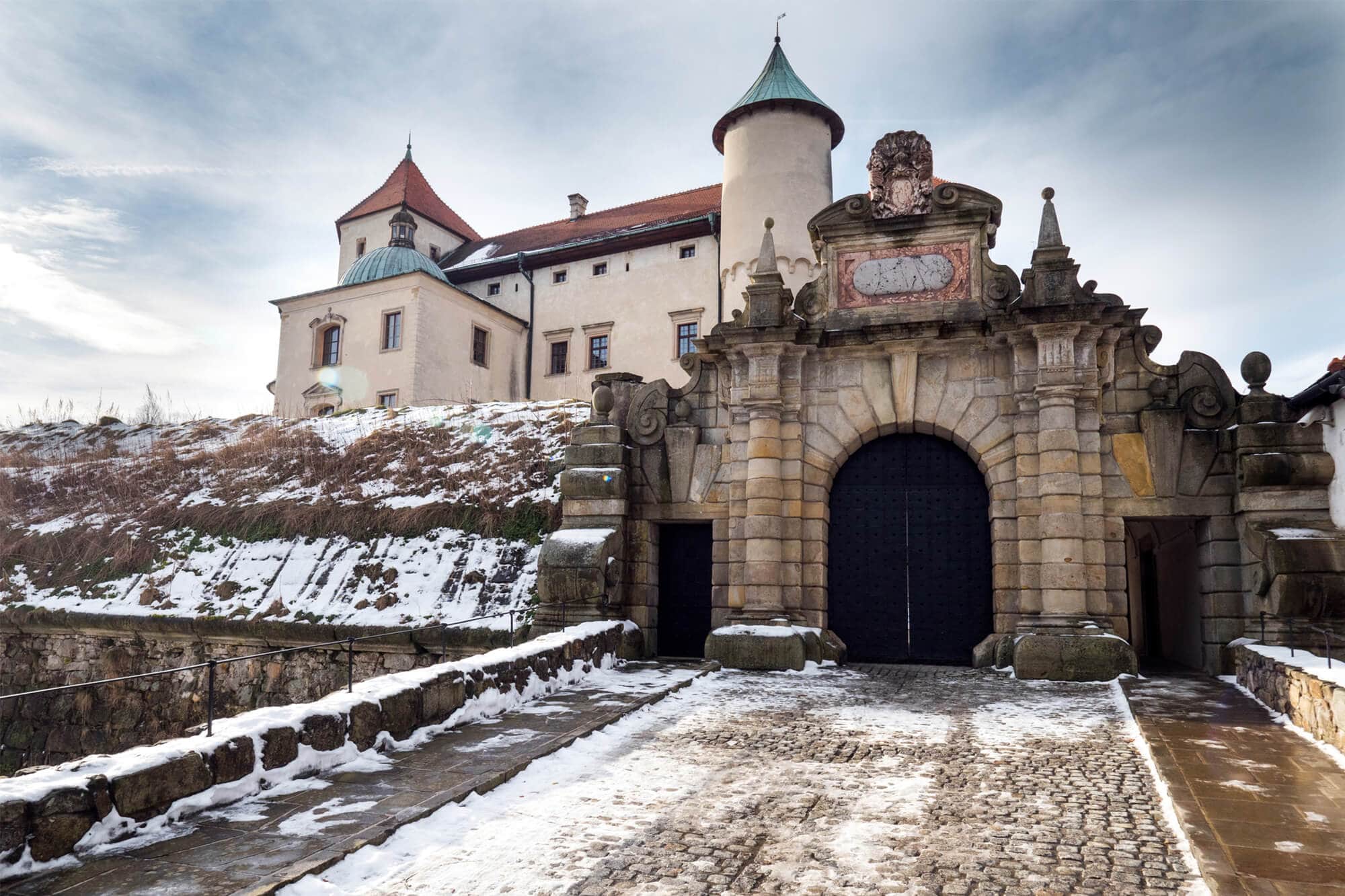
Dating back to the 14th century, Nowy Wisnicz Castle was constructed in the classical four-sided, central courtyard form by the noble Kmitas family. Later on, the castle made its way to the Lubomirskis which made it home to the Lubomirski Princess.
This group was no set of average folk, they were in fact, one of the most powerful tribes in Europe, partly due to the fact that Stanislaw Lubomirski was the biggest landowner on the continent. At one point the family lost the castle but managed to gain ownership again once communism fell in 1991.
Nowy Wisnicz Castle’s new life as a museum means that the family no longer lives here, but their legacy is detailed in the museum. One of the rooms in the castle has been completely restored so you can see firsthand how it would have looked back in the day.
If you’re staying in Kraków, Nowy Wisnicz is a perfect half-day trip as the castle is located only an hour’s bus ride away from the city center. The museum is open daily, except for Mondays, until 4:00 pm and there’s also a restaurant on site.
12. Wilanow Palace
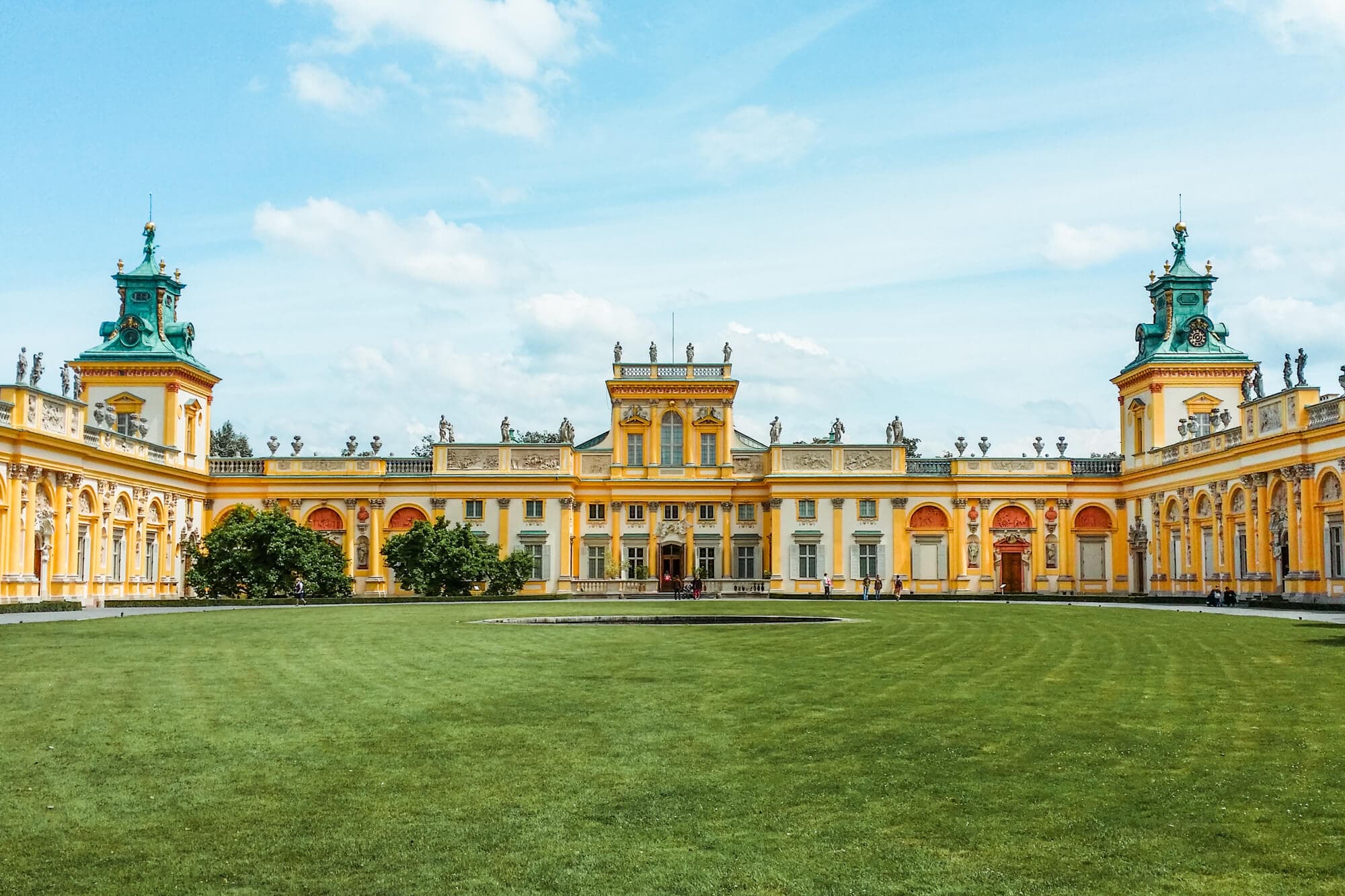
While technically not a castle, Wilanow Palace is just too gorgeous to be left out of this list. The very start of what would turn out to be a mesmerizing Palace began in April of 1677 when King John Sobieski III took ownership of the village. At first, the King built a simple typical Polish house intending to eventually transform it.
Over the years until 1696, the structure had been expanded and redeveloped into a recognizable noble house. Naturally, as time went by the ownership of Wilanow Palace transferred and eventually ended up in the hands of Stanislaw Kostka Potocki. It was during his ownership that in 1805 the Wilanow Palace opened its doors as a museum, one of the first in Poland.
The Royal apartments, event rooms, and socializing chambers, the King’s library, and the Chapel are found on the main floor. The exhibition and museum part of the Palace is located on the first floor where you can view the Gallery of the Polish Portrait among other invaluable pieces.
The Palace opens at 9:30 am every morning and closes at 6:00 pm in the evening except for Tuesday, Thursday, and Friday when it closes at 4:00 pm.
13. Czocha Castle
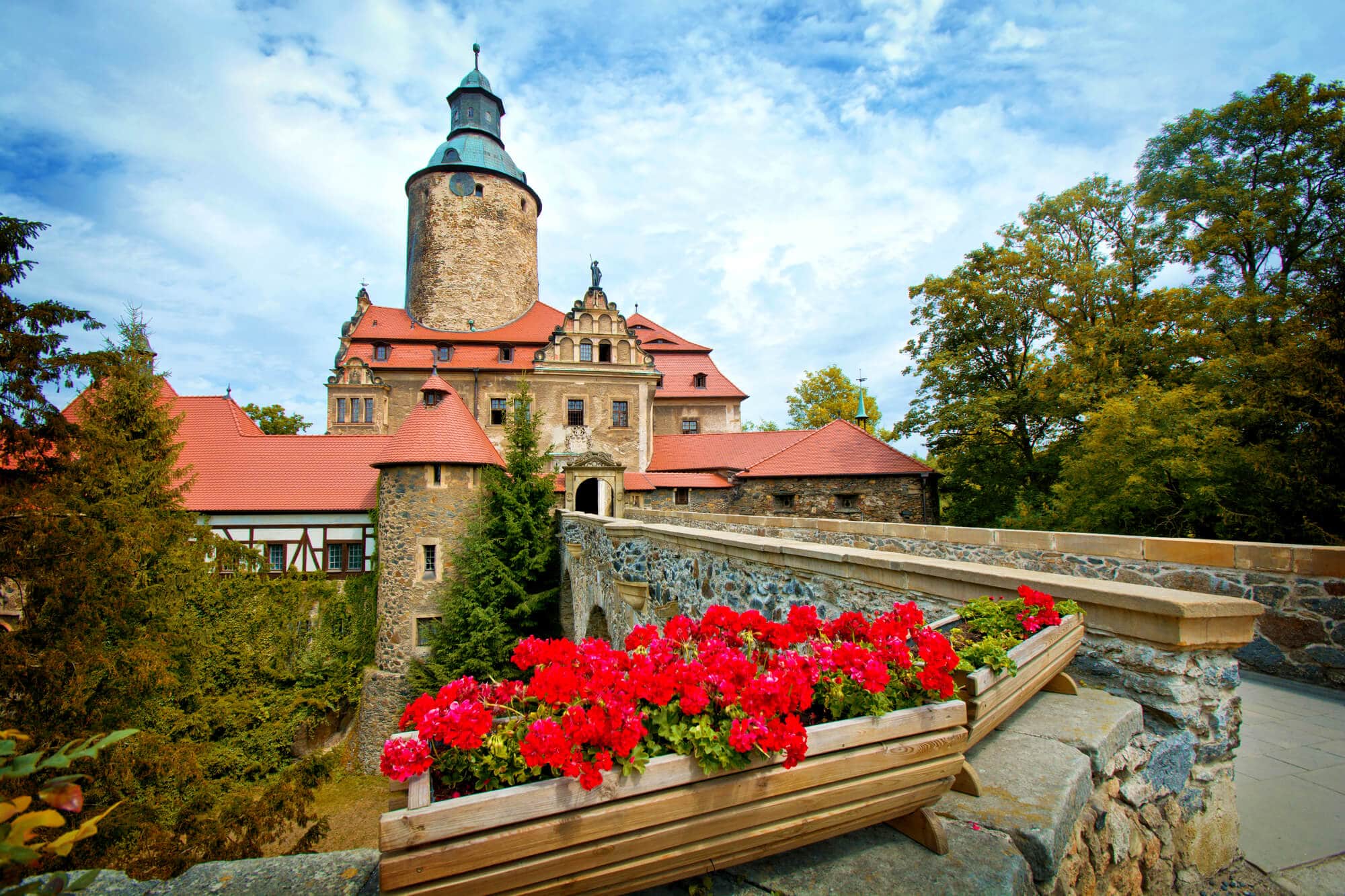
In the quaint village of Sucha in southwestern Poland, lies the defensive castle of Czocha. According to legends, it is one of the most haunted castles in Poland.
The castle, which sits on Gneiss Rock over Lake Leśnia, was first constructed in the 13th century. Wenceslaus I of Bohemia was the one who ordered the castle to be built, taking about a century to be completed.
Over the years the castle was passed on to noble families, princes, and Kings until 1909 when it was purchased by cigar manufacturer, Ernst Gutschow. After WWII Czocha Castle was broken into multiple times by thieves and Red Army soldiers. Any form of valuable items, paintings, and furniture was taken, leaving the castle more or less bare.
Since then Czocha Castle has housed Greek refugees in the 1940s and 50s and had returned to the Polish as a military vacation resort. Finally, Czocha Castle opened up as a hotel and conference center in 1996 and has actually been featured in several films including Beyond Sherwood Forest and Spellbinder.
Guided tours of Czocha Castle run every hour and take only 45-60 minutes. Those who aren’t staying at Czocha Castle as a guest can still enjoy the experience of the castle’s grounds, feast on traditional Polish cuisine, and grab a slice of cake and a coffee at the tea room.
🏰 Book your stay here >> Czocha Castle Hotel
14. Wawel Royal Castle
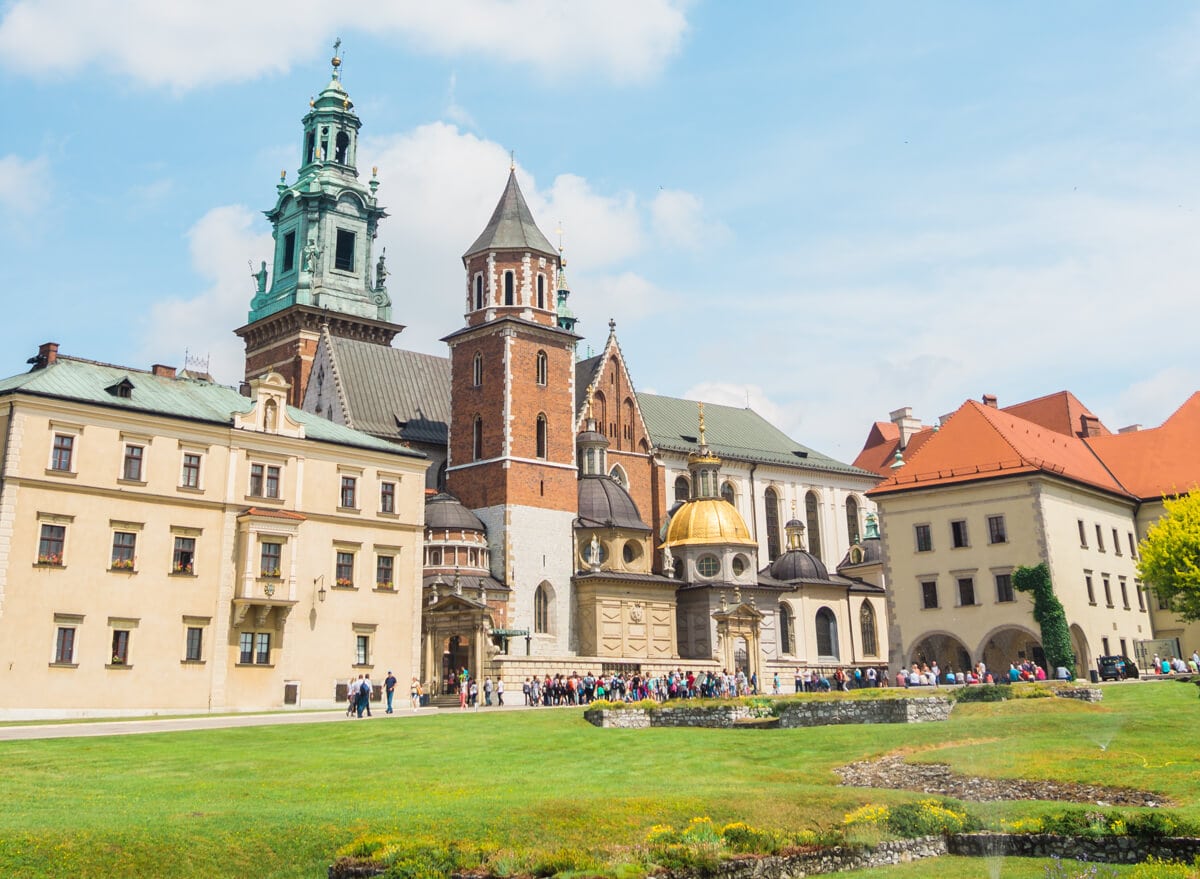
Wawel Castle, located in the heart of my dear Krakow, gained its name from the limestone hill in the center of the city known as Wawel. Architects believe that this castle is the best example of pre-romanesque architecture.
As Wawel was the seat of Polish rulers, we can date the first one back to the 11th century around the time of the rule of Mieszko II and Boleslav the Brave.
Nowadays the Wawel Royal Castle is a museum with five sections the Royal Private Apartments, State Rooms, Lost Wawel and the Exhibition of Oriental Art, and the Crown Treasury & Armoury. Each section requires a different ticket.
Upon visiting the castle, there are several guided options ranging from $26 to $58. Three of the most visited areas include the State Rooms, the Royal Private Apartments, and the Treasury & Armoury but everyone can enjoy the castle grounds for free.
The opening hours vary depending on the time of year with March and October opening from 9:00 am – 6:00 pm, and the summer months closing slightly later.
15. Krzyztopor Castle

Krzyztopor Castle, one of the most unique castles in Poland, is located in the Świętokrzyskie Voivodeship, halfway between Krakow and Lublin. Construction of the castle began in 1621 by the powerful magnate, Krzysztof Ossoliński, and is known for its unusual design and complex symbolism.
The castle was built in the shape of a star, with four wings representing the four elements of earth, air, fire, and water. It also featured a complex system of hidden passages and secret rooms, which were used by Ossoliński to hide his treasures and escape from enemies.
Unfortunately, Krzyztopor Castle was destroyed during the Swedish invasion of Poland in 1655 and has been in ruins ever since.
16. Rogalin Palace

Rogalin Palace is a stunning 18th-century palace located 35 minutes south of Poznan. The palace was built by the Raczynski family and served as their residence for many centuries.
Over the years, the palace was expanded and renovated, with new wings and gardens added to enhance its beauty and grandeur. Today, Rogalin Palace is one of the most beautiful palaces in Poland and is known for its stunning architecture, beautiful gardens, and rich history.
You can explore the palace’s many rooms and chambers, which are filled with antique furniture, paintings, and sculptures. The palace’s beautiful gardens are also a popular attraction, featuring a variety of trees, flowers, and fountains. The palace is also home to the Raczynski Library, which contains a vast collection of books, manuscripts, and documents related to Polish history and culture.
In addition to its cultural and historical significance, Rogalin Palace is also known for its role in the preservation of the Polish oak tree. The palace’s surrounding forest is home to many oak trees, some of which are over 800 years old.
17. Kórnik Castle

Over the years, the castle was expanded and renovated, with new wings and towers added to enhance its beauty and grandeur. Today, Kórnik Castle currently houses a museum and the Kórnik Library.
In addition to its cultural and historical significance, Kornik Castle is also known for its ghostly legends and stories. Many visitors claim to have seen the ghost of a young girl who died in the castle’s chapel, adding to the castle’s allure and mystery.
As mentioned above, you can visit Kornik Castle and Rogalin Palace on this half-day tour from Poznan.
18. Kwidzyn Castle

Kwidzyn Castle is a beautiful medieval fortress located in Kwidzyn, the perfect day trip from Gdansk. The castle was built in the 14th century and served as a defensive stronghold for the Teutonic Knights, a powerful religious order that controlled much of northern and eastern Europe during the Middle Ages.
Over the centuries, the castle was expanded and renovated, with new towers and fortifications added to enhance its defensive capabilities. Today, Kwidzyn Castle is a popular tourist attraction and a symbol of Poland’s rich history and culture.
Kwidzyn Castle is also known for its role in the Battle of Grunwald in 1410, one of the most important battles in Polish history. The Polish-Lithuanian army, led by King Jagiello and Grand Duke Vytautas, defeated the Teutonic Knights, ending their dominance in the region and paving the way for the Polish-Lithuanian Commonwealth.
19. Łańcut Castle

Łańcut Castle is a magnificent 17th-century palace located in the Subcarpathian Voivodeship region of southeastern Poland, 25 minutes east of Rzeszów. The castle was built by the Potocki family, one of the most powerful and influential families in Poland during the 17th and 18th centuries.
Over the years, the castle was expanded and renovated, with new wings and gardens added to enhance its beauty and grandeur.
Today the castle is also home to the Museum of the Potocki Family, which contains a vast collection of artifacts related to the family’s history. Marvel at castles’s majestic interior, my favorite is the green room with a warm herringbone floor.
20. Lidzbark Castle
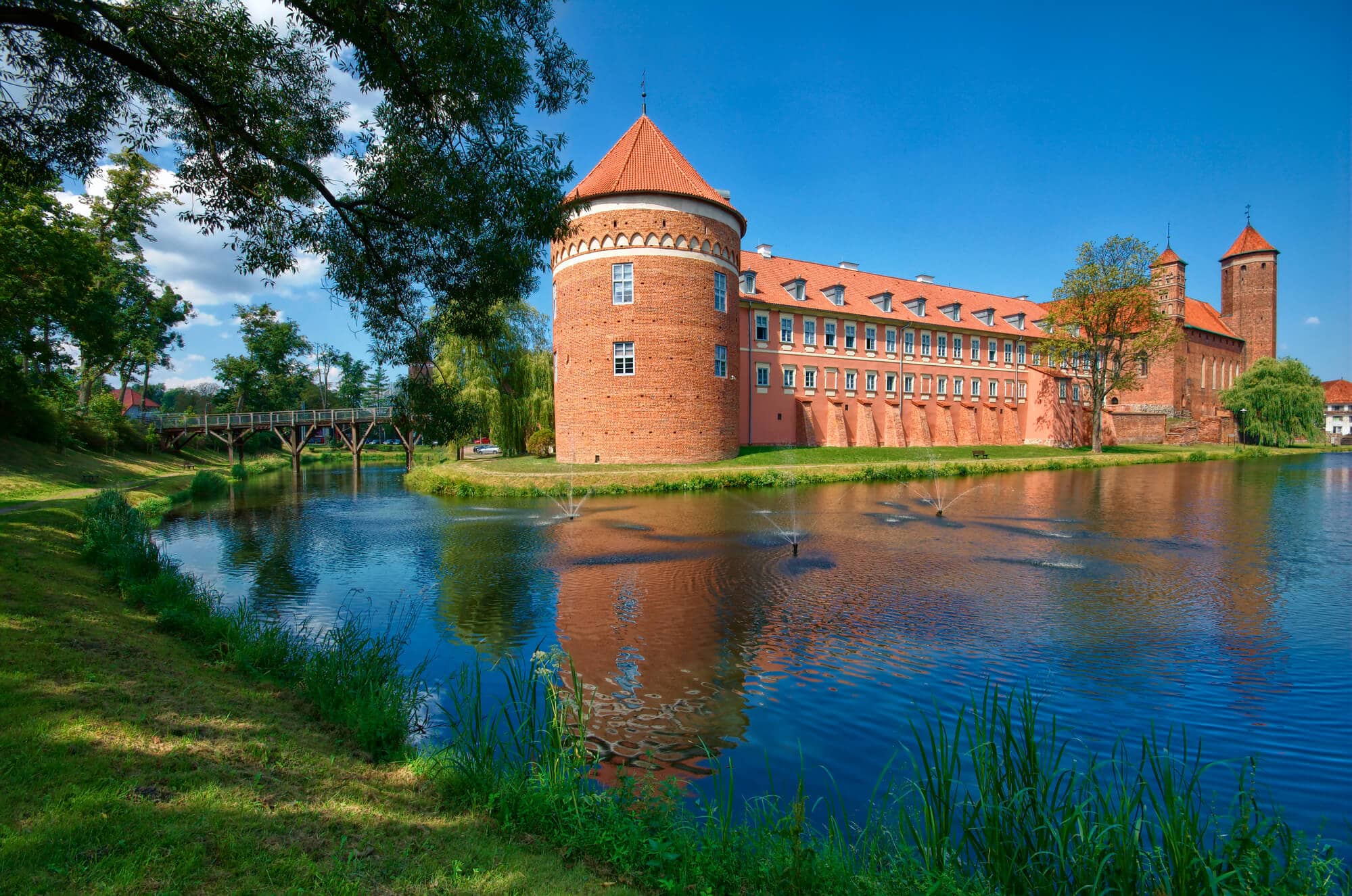
Lidzbark Castle is a beautiful medieval fortress located in the Warmian-Masurian Voivodeship region of northern Poland, 2 hours southeast of Gdansk.
Construction of the castle was completed in 1401 and it served as a defensive stronghold for the Teutonic Knights, a powerful religious order that controlled much of northern and eastern Europe during the Middle Ages.
Today, Lidzbark Castle is one of the most precious Gothic structures in the country and a popular destination for locals and tourists alike.
21. Baranów Sandomierski Castle

Baranów Sandomierski Castle is a stunning Renaissance castle located on the east bank of the Vistula River, just two hours northeast of Krakow. The castle was built towards the end of the 16th century in the place of a medieval fortified knightly manor.
Today the castle houses a museum, hotel and restaurant that regularly hosts Old Polish-style banquets. The museum is open daily, except Mondays, and guided tours are given every hour.
Baranów Sandomierski Castle stands as one of the most impressive examples of Renaissance architecture in Poland and one of the most well-preserved objects in Europe.
🌟 Check price and availability >> Baranów Sandomierski Castle Hotel
22. Będzin Castle

Będzin is a medieval stone castle located in the Silesian Voivodeship region of southern Poland, just outside Katowice. The castle was built in the 14th century and served as a defensive stronghold to hold off any invasion of Lesser Poland from Bohemia or Silesia.
The castle was built in place of a wooden castle that was burned down by the Mongols in 1241. It was rebuilt in wood, but in 1358 Casimir the Great (1333-1370) replaced the mainly timber structure with the masonry castle you see today.
Today the castle houses a museum displaying old armor, weapons, clothes and maps.
How to get around Poland
The best part about visiting Poland is that it’s easy to get around by car and train, taxis are affordable and there are so many amazing guided tours to choose from.
Rent a car
I have rented a car several times in Poland to have the freedom to explore at my own pace. I normally don’t like to drive in the big cities in Poland, traffic can get a little crazy. However, the countryside where you’ll find most of these castles is totally fine.
So if you are comfortable driving, I highly recommend you rent a car. I always use DiscoverCars, a comparison site that covers 10,000 destinations worldwide. They often have the best deals, they include smaller rental companies and they offer FREE cancellations up to 48 hours before your reservation.
🚘 Check price and availability >> Rental cars in Gdansk
Private driver
🔥 HOT TIP >> If you’re looking for a private driver to take you around Poland or Central Europe, I recommend GFP Travel. Tomasz is a pleasure to communicate with, and nothing is too much. They go above and beyond to make sure your trip is the best it can be.
You choose where you want to go or ask them to plan everything for you. Our guide Lucas was knowledgeable and very patient when I wanted to stop everywhere to shoot photos. It’s a great way to do day trips from Gdansk and explore northern Poland.
🚕 You can book your private driver here >> Car services in Poland & Central Europe
FAQs: Castles in Poland
Why are there so many beautiful castles in Poland?
There are several reasons why Poland is home to so many beautiful castles. Firstly, Poland has a rich and complex history, with various kingdoms, empires and dynasties vying for power over the centuries. This led to a proliferation of castles and fortresses, as rulers sought to protect their territories from invaders and consolidate their power.
Secondly, Poland has a long tradition of architecture and craftsmanship, with skilled artisans and craftsmen creating some of the most intricate and beautiful structures in Europe. The country’s castles are a testament to this tradition, with many featuring intricate stonework, woodcarvings, and frescoes.
Finally, Poland’s natural landscape is also a factor in the abundance of castles. The country is home to many hills, mountains, and forests, which provided natural defensive positions for castles and fortresses. Additionally, Poland’s many rivers and waterways made it an important trade and transportation hub, with many castles built along these routes to protect and control trade.
What is the best time to visit castles in Poland?
The best time to explore the castles in Poland depends on your personal preferences and what you want to experience. Generally, the peak tourist season in Poland is from June to August when the weather is generally warm and sunny. However, this also means that the castles can be crowded, and prices for accommodation and tours may be higher.
If you prefer to avoid the crowds, the shoulder seasons of May, September, and October can be a great time to visit. The weather is still mild, and many attractions are still open, but there are fewer tourists, and prices may be lower.
If you would like to combine castle hunting with Poland’s Christmas markets, then the winter months of December to February can be a great time to visit. Many castles are open year-round, and the snow-covered landscapes can be especially beautiful.
Keep in mind that many of the castles in Poland are closed on Mondays.
What is the most beautiful castle in Poland?
The most beautiful castle in Poland is Książ Castle, because of its pink color, fairytale-esque appearance and location on a lush hill surrounded by greenery.
Niedzica Castle also boasts a beautiful location on a lake with a mountain range in the background.
However, it’s difficult to say which castle is the most beautiful in Poland as it, of course, depends on personal preference and there are so many to choose from.
Are there any castle hotels in Poland?
Yes, there are many castles in Poland that have been turned into hotels. Some popular castle hotels include:
- Moszna Castle Hotel (between Wroclaw and Katowice)
- Czocha Castle Hotel (between Wroclaw and Dresden in Germany)
- Baranów Sandomierski Castle Hotel (northeast of Krakow)
- Bobolice Castle Hotel (two hours east of Krakow)
- Reszel Castle Hotel (2 hours and 45 minutes east of Gdansk)
Are there any haunted castles in Poland?
There are many legends and stories about haunted castles in Poland, such as Książ Castle, Olsztyn Castle and Kórnik Castle. But Czocha Castle might have the darkest history of them all!
The bridge leading to the Czocha Castle gates is where you first can encounter its ghostly inhabitants. They are the unfortunate spirits of mourners who were part of a funeral procession in 1719. The bridge collapsed, causing them to drown in the moat.
However, the cries from Joachim von Nistitz’s (former owner) unfaithful wife are even stronger. To punish her, he had her drowned in the well, and her child, conceived through her love affair, was bricked up in a chimney. The baby’s cries can also be heard coming from the castle walls.
And it doesn’t stop there. The White Lady is the oldest ghostly inhabitant of the castle. She is the spirit of Gertrude, who was ordered beheaded by her brother in the 15th century. So do you dare spend a night in Czocha Castle?
What is the oldest castle in Poland?
Lenno Castle, located two hours west of Wroclaw, is considered by many as the oldest castle in Poland. The first records referring to the existence of the castle date back to the 10th century, and the castle has been expanded regularly over the years.
Unfortunately, the castle was destroyed after the 30-day war in the 17th century and today only ruins are left of the once mighty fortress. It opened to visitors in 2018.
Looking for more Poland guides?
- The perfect 2 days in Gdansk itinerary
- The 17 best day trips from Gdansk
- 7 reasons why you have to visit Poland
Remember to pin for later 😀
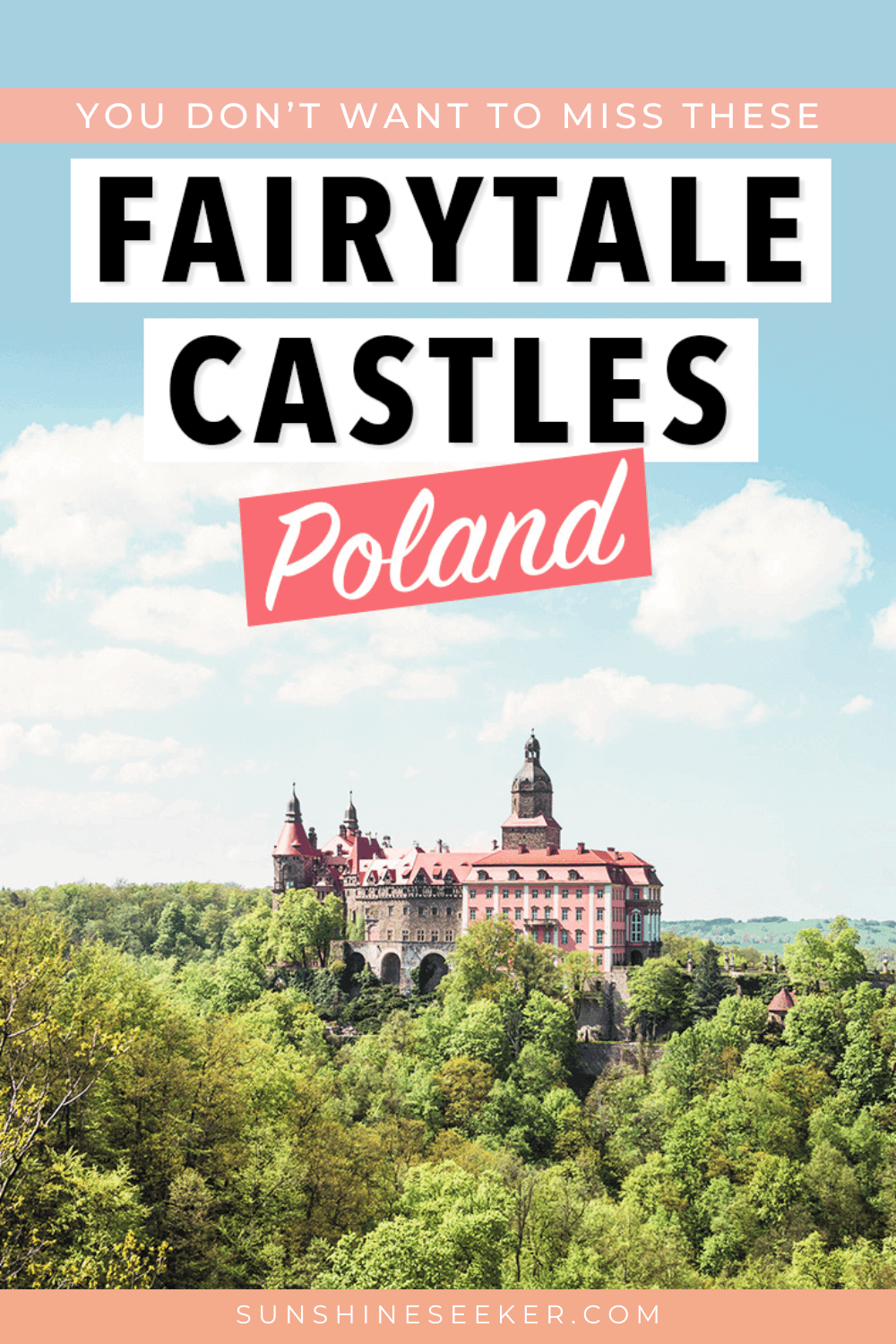
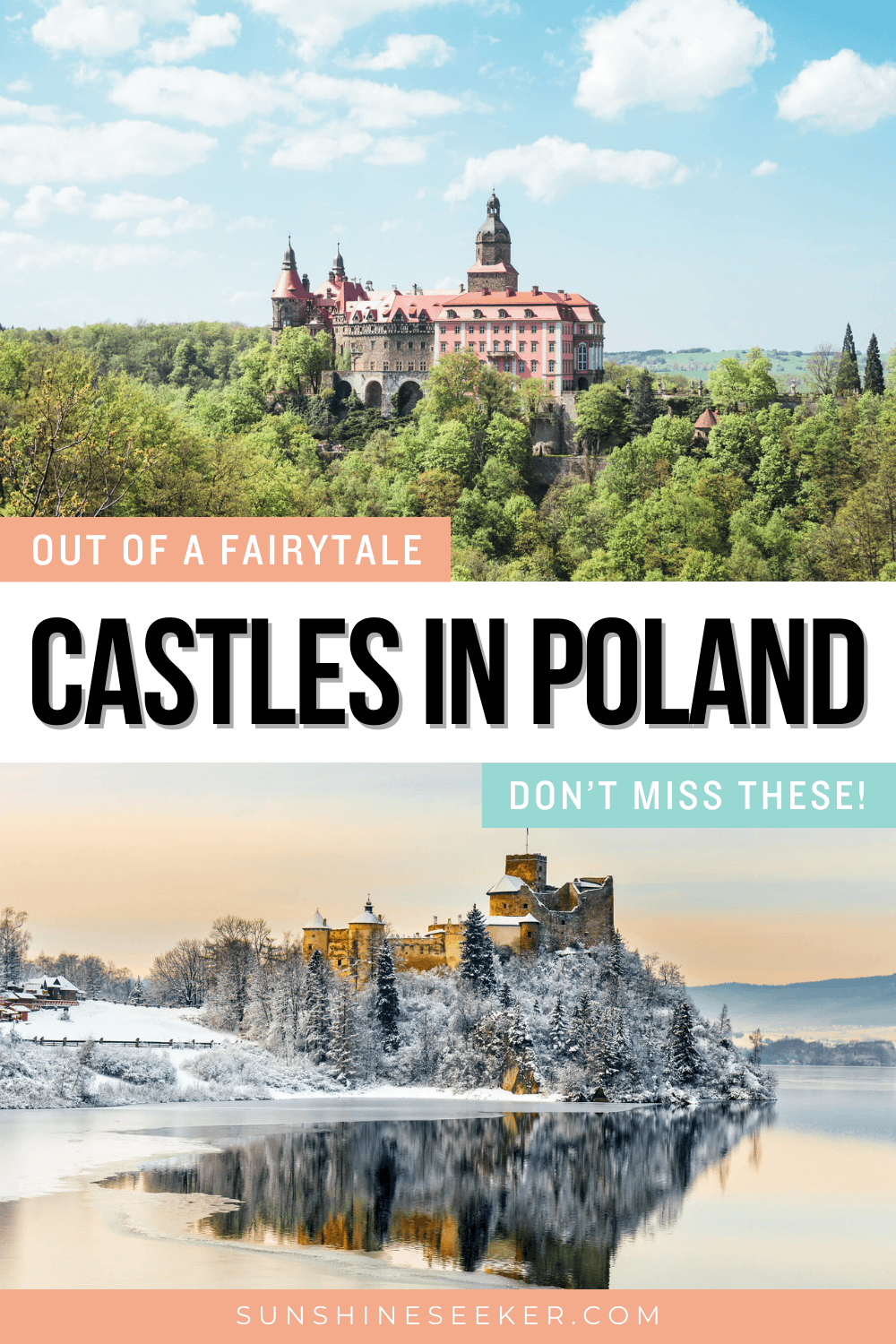



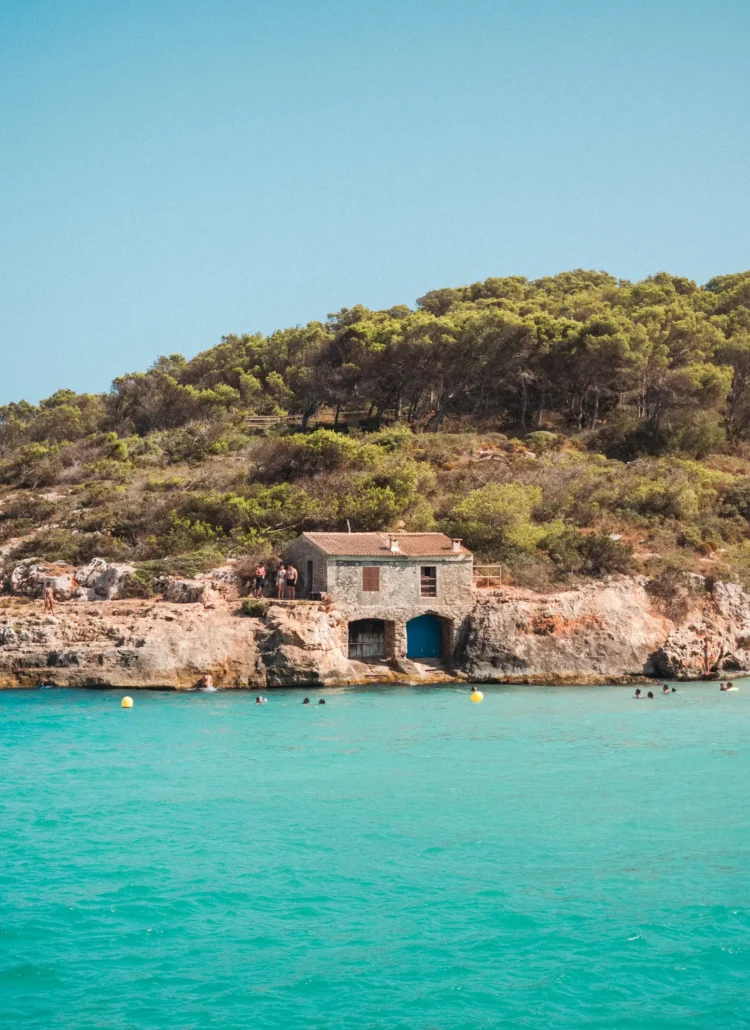
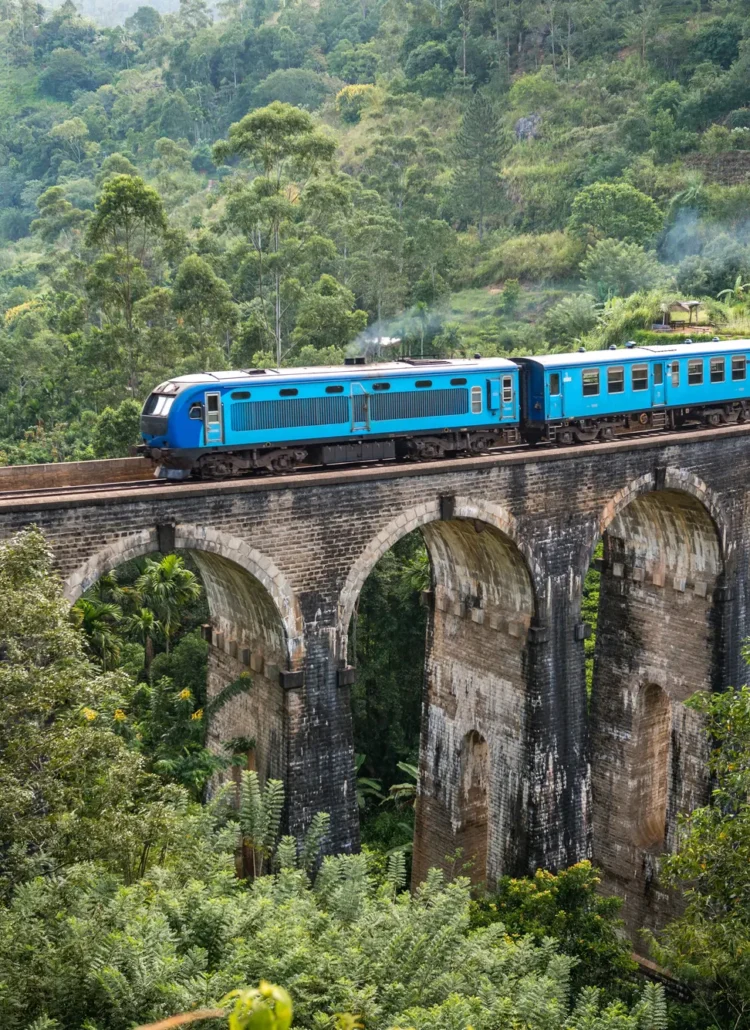




It’s so much like a fairy tale. They are so beautiful.
Right? Thanks for stopping by Lisa 🙂
I never really thought of Poland as a particularly great destination for seeing castles, but these pictures! I love all the trivia in this post, as well– Scrotum Castle, what??
I think most people overlook Poland when it comes to castles. Haha, I know! Who knew a scrotum castle could be so beautiful? 😀
Moszna – that’s the word homonym. Means “scrotum”, but in Old Polish means “a valley”, “a sack”
Absolutely loved reading your blog. This definitely is one comprehensive guide for someone who is interesting in visiting the gorgeous castles of Poland. Thanks for putting it together. Also, lovely photos!
Thank you so much, Upasana! 🙂
These look amazing! Especially Niedzica Castle and Gołuchów Castle. Hoping to get to Poland soon 😀
I hope you go too! Such a beautiful country 😀
What a great post. I grew up in Poland and love seeing it receiving the attention it sure deserves. We have so many beautiful parts, and most people, like yourself, are quite surprised at what they discover when they visit Poland. I actually grew up not far from Goluchow, and went to the Goluchow castle for many field trips and day trips with my family. Great memories!
Thank you so much, Aga 😀 What a great place to go on field trips! I love Poland and I’m so glad I got to live there on and off for six years.
Omg this is simply out of a fairytale – so dreamy! Poland is definitely on my bucket list now. Thanks for sharing these interesting tidbits about each castle.
Thank you! I’m so happy to hear that Divya 😀
Hello there,
Thank you for this post! I’m Polish and I visited almost all of those places. In fact Poland has over 500 castles and about 2500 palaces. Some of them in private hands and turned into hotels but still available to visit. Other places I would recommend would be Osiecznica close to Boleslawiec Slaski, Lancut Palace , Brzeg Castle.
Thank you for the tips, Monika 😀 I can’t wait to visit even more of the castles in Poland!
These castles are stunning. I’ve only had the pleasure of visiting Wilanow Palace, but I hope to return to Poland and see more of these gorgeous buildings in person.
Right!? I hope you do 😀